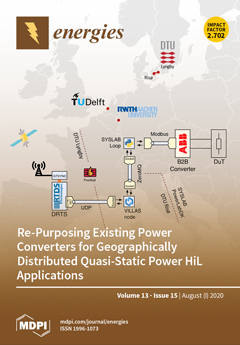Open AccessArticle
Examining the Impact of Daylighting and the Corresponding Lighting Controls to the Users of Office Buildings
by
Lambros T. Doulos, Aris Tsangrassoulis, Evangelos-Nikolaos Madias, Spyros Niavis, Antonios Kontadakis, Panagiotis A. Kontaxis, Vassiliki T. Kontargyri, Katerina Skalkou, Frangiskos Topalis, Evangelos Manolis, Maro Sinou and Stelios Zerefos
Cited by 30 | Viewed by 3296
Abstract
Daylight utilization significantly contributes to energy savings in office buildings. However, daylight integration requires careful design so as to include variations in daylight availability and maintain a balance between factors such as lighting quality and heat gain or loss. Designers with proper planning
[...] Read more.
Daylight utilization significantly contributes to energy savings in office buildings. However, daylight integration requires careful design so as to include variations in daylight availability and maintain a balance between factors such as lighting quality and heat gain or loss. Designers with proper planning can not only improve the visual environment and create higher-quality spaces, but simultaneously minimize energy costs for buildings. The utilization of photosensors can exploit the benefits of daylighting by dimming the lighting system, so that no excessive luminous flux is produced, thus leading to energy savings as well as visual contentment. However, the human factor is crucial for the proper function of a lighting control system. Without its acceptance from the users, energy savings can be minimized or even negligible. The objective of this paper is to present a post-occupancy evaluation regarding occupant satisfaction and acceptance in relation to daylighting in offices equipped with automated daylight controls. In addition, the response of the users was compared with lighting measurements that were performed during the post-occupancy evaluation. Three case studies of office buildings with installed daylight-harvesting systems were examined. The age of the occupants was a crucial factor concerning their satisfaction in relation to the lighting levels. Aged users were more comfortable with lighting levels over 500lx, while young users were satisfied with 300lx. The impact of different control algorithms was outlined, with the integral reset algorithm performing poorly. The acceptance of the users for the closed loop systems maintained the expected energy savings of the daylight harvesting technique. Most of the occupants preferred to use daylight as a light source combined with artificial light but having the control to either override or switch it on and off at will. The results shown that a post-occupancy survey along with lighting measurements are significant for making an office environment a humancentric one.
Full article
►▼
Show Figures





